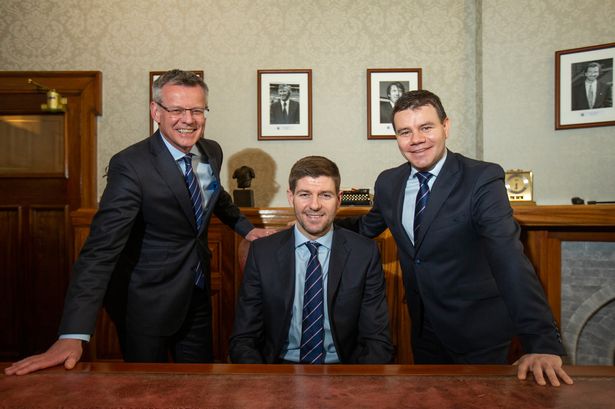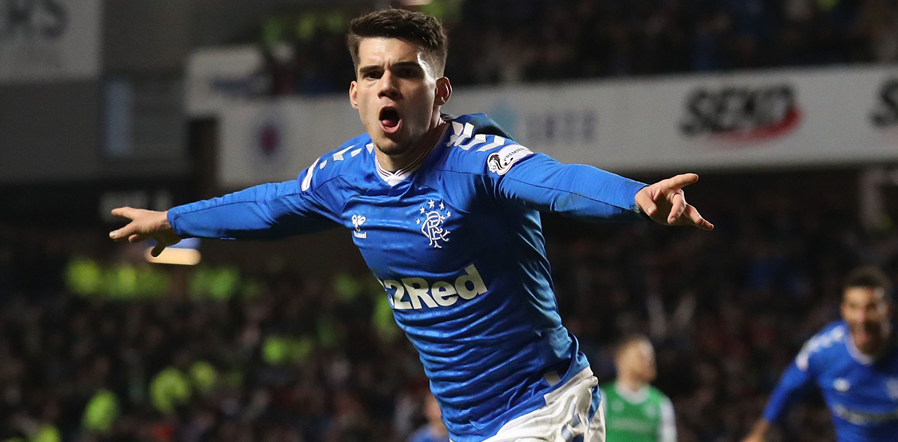As sure as night follows day, the opening of the January transfer window comes alongside frantic debate about what this Rangers side “needs” at this stage of the season, fuelled by the fire of media-driven transfer speculation as old and new names get linked with the club.
The January window is notorious the world over for being a tough nut to crack for every football team. Bringing in a player or two can be the difference between first and second or survival and relegation, while losing a top performer can derail a season. The challenges that face Ross Wilson in this window are not unique, yet they are no less challenging. Adding to the particularly challenging environment of a January window is the temporary barrier of Covid-19 and the more permanent complication of Brexit. This article isn’t here to go into the depths of what Rangers require in this window (although some cover in midfield would be wonderful Mr Wilson please), but rather it seeks to delve into the issues mentioned and discuss how it can be possible for Rangers to overcome them in these most trying of times.
The Google-Based Standard
Most studies of the transfer market centre around the use statistical analysis – assessing the value of players both on and off the park. This is because while clubs may fork out a large outlay to acquire a player, they can often become assets for the club for not just their footballing ability but their marketability. A group of Korean researchers investigating this correlation found that there is a direct link between transfer fees and the amount of search results for a player on Google – known as “The Google-Based Standard” (GBS). This in itself is understandable, if even a little unsurprising, as the more famous players are likely to be of a higher quality and therefore be followed more. Their findings can be found in the graph below, which details the steep rise in player values in correlation with their Google search results.

The interesting thing of note about this in a Rangers context is the marketability of players. A good example of this is our marquee signing in the last January window – Ianis Hagi – whom if googled returns approximately 2.1 million results on his own in the UK. However, if you Google “Hagi” alone, you are met with approximately 6.8 million results with Ianis’ father’s Wikipedia page being the first thing you see but Ianis being across all the top stories with his own Wikipedia page the second top result. What is particularly interesting is when Googling “Hagi” from a Romanian perspective, where Hagi Sr understandably dominates but on the first page of the google search you are met with a link to Ianis’ twitter page and videos of him at Rangers. Taking this further and applying the GBS model to a country where Rangers are actively seeking to grow their influence – India – and when googling “Hagi”, Ianis’ Wikipedia and Transfermarkt profile are two of the top three search results, followed by Ianis once again dominating the top stories. While nobody is for a second suggesting that Hagi was signed purely on the basis of his surname (because that is objectively not the case) it shows that the £3.5m fee Rangers paid for him, a large outlay by our standards, has had a duel benefit of results on and off the park, where his skill and ability is helping the team pick up results on the park while enabling Rangers to grow their exposure as a club and as a brand in niche areas of the world we may otherwise be unable to reach as effectively.
In this particular window, Rangers may be in a fortunate position where they can pick up brand-expanding talents for a lower cost, as will be further expanded upon in the next section.
Covid-19 Shifting the Market
Two years ago, the six biggest clubs in England and the three biggest clubs in Spain spent over £500 million between them as Coutinho swapped Liverpool for Barcelona with the fee trickling down to Southampton as Virgil van Dijk made his move to Anfield. At the same time, Rangers signed Declan John, Greg Doherty and Glenn Middleton while acquiring Jamie Murphy, Jason Cummings and Russell Martin on loan. It’s safe to say that the January market in 2020 will look radically different to that of two years ago in terms of the financial outlay by clubs, but that’s not say it’s a complete write-off from a Rangers perspective and if anything, it may well play into our hands.
Historically, football transfers have been a “seller’s market”, where clubs the selling clubs have wielded significant power over the buyer in terms of the transfer fee’s they command for players. Covid-19 has flipped that reality on its head as football becomes a “buyer’s market”, with the bigger clubs who have been able to maintain significant liquidity despite the drop in revenues now being in a position to exploit the financial difficulties faced by their counterparts who rely heavily on matchday income. Rangers are in the fortunate position of that not being the case and not in a position where we need to sell players in this window as the club have made clear. We are therefore in the fortunate position of possibly being able to utilise this particularly unique window to our advantage.

Analysis from the renowned accounting firm KPMG has found that the Covid-19 pandemic has hit the transfer valuations of older players the most, with some losing almost 70% of their valuation, while young players and those entering their prime have seen their values decrease to varying degrees. In a window where Rangers won’t be intending to make a “star signing” for a large outlay, there can be value found in potentially looking at players of a certain age on initial short-term contracts. Adding into that is further analysis from KPMG that concludes due to the pandemic, wages are set to decrease in the long term along with the amount of money paid in signing bonuses. This further bolsters Rangers as a club’s in more financially lucrative leagues aim to be more frugal with their finances results in a levelling of the playing field in a financial sense. There was never going to be the capacity for Rangers to increase our wage structure to their levels, but they may now decrease their wage structure to our level, allowing Rangers to compete for players that otherwise may not have been financially possible.
Linking this back to the GBS model discussed in the previous section, Rangers have an opportunity to kill two birds with a single stone so to speak. Based on the analysis from KMPG, there will be a significant number of experienced and well known talent that will be available for a fraction of their pre-pandemic price. Not just older players either, Figure 2.0 shows us that there are players of all age groups who have seen their value decrease in some capacity. This means that we may well be in a position in this window to attract talent that may otherwise have been out of our reach as more players fall into our price range.
Brexit
Whatever your views on the matter, Brexit undoubtedly poses a new challenge to all British clubs when entering the transfer market for European players. This is arguably the most difficult aspect to assess because we do not yet know what a post-Brexit transfer policy will look like in Scotland. In England, clubs are prohibited from signing EU players under the age of 18 and limited to six U21 EU signings per season. When attempting to sign players they must first receive a Governing Body Endorsement (GBE) and are assessed based on a set criterion which includes the number of club appearances the player has made, the quality of the league their coming from and even the academy of the club that developed them. It is important to note that in the women’s game, the player will not be assessed on youth international appearances or the selling club’s European pedigree unlike in the male game. It remains to be seen if the SFA will follow suit in Scotland and implement a similar points-based system, but Premier League officials in England expect clubs to still be able to sign the players they want to in-the-main despite the increased red-tape.
In this window, Scottish clubs will still be able to sign players from the EU subject to SFA approval before a longer-term strategy is agreed upon. It is unlikely that this will have a material impact on transfer business in this window meaning Rangers can still search Europe as they normally would for talent before needing to potentially adapt our signing policy accordingly in the summer.
This is one of the most challenging windows that Rangers have faced in terms of incomings and in that regard, we are in a fortunate position that we have not yet been crippled with injuries. That being said, there is by no means a guarantee that will be the case after Sunday or indeed in a few games time so striking the balance is key. This article has aimed to show that even in these trying times there is still a chance for Rangers to strike gold in this particularly difficult market. Ross Wilson has a thoroughly strong record at Rangers for his shrewd transfer business, but this may well be his toughest challenge yet.
Twitter: @rsjh0501
Further Reading:
Sangmin Lee, Inho Hong and Woo-Sung Jung: ‘A Network Approach to the Transfer Market of European Football Leagues’
KPRG: ‘Player Value not Immune to Pandemic’
Stathlon: ‘The Effect of Transfers on the Performance of a Football club: A Review’




